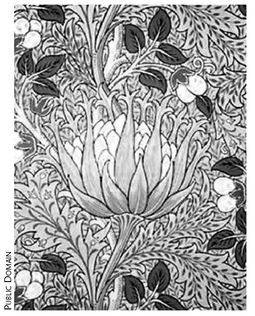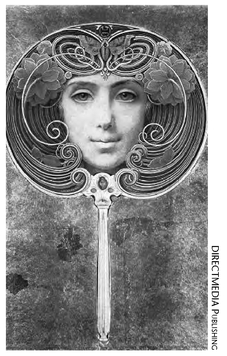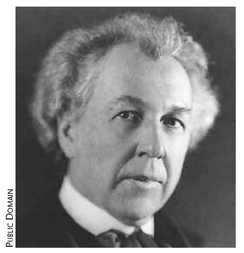Peak Everything (13 page)
Authors: Richard Heinberg

Moreover, the re-ruralization program I am describing could be a springboard for the rebirth of democracy in this nation. Over the past few years democracy in America has become little more than a slogan. In fact this erosion of our democratic traditions has been going on for some time. As Kirkpatrick Sale showed in his wonderful book
Human Scale,
as communities grow in size, individuals' abilities to influence the affairs within them tend to shrink.
9
Sociological research now shows that people who have the ability to influence policy in their communities show a much higher sense of satisfaction with life in general.
10
In short, the re-ruralization of America could represent the fulfillment of Thomas Jefferson's vision of an agrarian democracy â but without the slaves.
Human Scale,
as communities grow in size, individuals' abilities to influence the affairs within them tend to shrink.
9
Sociological research now shows that people who have the ability to influence policy in their communities show a much higher sense of satisfaction with life in general.
10
In short, the re-ruralization of America could represent the fulfillment of Thomas Jefferson's vision of an agrarian democracy â but without the slaves.
If we do this well, it could mean the revitalization not only of democracy, but of the family and of authentic, place-based culture. It could also serve as the basis for a new, genuine conservatism to replace the ersatz conservatism of the current ruling political elites.
What I am proposing is nothing less than a new alliance among environmental organizations, farmers, gardeners, organizations promoting economic justice, the anti-globalization movement, universities and colleges, local businesses, churches, and other social organizations. Moreover, the efforts of this alliance would have
to be coordinated at the national, state, and local level. This is clearly a tall order. However, we are not talking about merely a good idea. This is a survival strategy.
to be coordinated at the national, state, and local level. This is clearly a tall order. However, we are not talking about merely a good idea. This is a survival strategy.
It may seem that I am describing and advocating a reversion to the world of 1800, or even that of 8000 BCE. This is not really the case. We will of course need to relearn much of what our ancestors knew. But we have discovered a great deal about biology, geology, hydrology, and other relevant subjects in recent decades, and we should be applying that knowledge â as Holmgren, Mollison, Jeavons, and others have done â to the project of producing food for ourselves.
Cultural anthropology teaches us that the way people get their food is the most reliable determinant of virtually all other social characteristics. Thus, as we build a different food system we will inevitably be building a new kind of culture, certainly very different from industrial urbanism but probably also from what preceded it. As always before in human history, we will make it up as we go along, in response to necessity and opportunity.
Perhaps these great changes won't take place until the need is obvious and irresistibly pressing. Maybe gasoline needs to get to $10 a gallon. Perhaps unemployment will have to rise to 10 or 20 or 40 percent, with families begging for food in the streets, before embattled policy makers begin to reconsider their commitment to industrial agriculture.
But even in that case, as in Cuba, all may depend upon having another option already articulated. Without that, we will be left to the worst possible outcome.
Rather than consigning ourselves to that fate, let us accept the current challenge â the next great energy transition â as an opportunity not to try vainly to preserve business as usual (the American Way of Life that, we are told, is not up for negotiation), but rather to re-imagine human culture from the ground up, using our intelligence and passion for the welfare of the next generations, and the integrity of nature's web, as our primary guides.
3
(post-) Hydrocarbon Aesthetics

T
HOUGH I COULD HARDLY call myself a professional violinist these days, I still get the occasional call for a wedding or other special function, and I cherish these increasingly rare opportunities to work alongside competent players. This past April I was hired to play in a string quartet to provide the requisite “musical wallpaper” for the opening of a traveling exhibit (“International Arts and Crafts: From William Morris to Frank Lloyd Wright”) at the de Young Museum in San Francisco. As a gratuity to the musicians, the Museum offered us each a pair of tickets to the exhibit. Since my wife Janet and I have long been fascinated by the Arts and Crafts movement, we used our tickets a few weeks later.
HOUGH I COULD HARDLY call myself a professional violinist these days, I still get the occasional call for a wedding or other special function, and I cherish these increasingly rare opportunities to work alongside competent players. This past April I was hired to play in a string quartet to provide the requisite “musical wallpaper” for the opening of a traveling exhibit (“International Arts and Crafts: From William Morris to Frank Lloyd Wright”) at the de Young Museum in San Francisco. As a gratuity to the musicians, the Museum offered us each a pair of tickets to the exhibit. Since my wife Janet and I have long been fascinated by the Arts and Crafts movement, we used our tickets a few weeks later.
The exhibit included top examples of the British, German, Scandinavian, American, and Japanese versions of the genre. There were fabric and book designs by William Morris, interiors by Frank Lloyd Wright, and furnishings by C.F.A. Yoysey and others.
As Janet and I walked through the exhibition I couldn't help but reflect on its implications for humanity's aesthetic past, present, and future.
The Arts and Crafts movement was, in essence, a critical response to the industrial revolution. William Morris, the movement's founder, saw the industrialization of Britain and deplored the results. Farmers, craftspeople, and manual workers often could not compete economically with fuel-fed engines, and so vocations and skills that had developed over generations vanished in favor of jobs tending machines. But of course it was impossible for the machines to work intelligently or soulfully as humans do, and so the aesthetic environment of Britain became progressively more denatured and dehumanized.

William Morris.

William Morris designed type fonts and translated medieval and classical texts, but he was especially famed for his fabrics and wallpaper.
During Morris's lifetime, the usual designs of mass production merely imitated the symbolic elements of architecture and furnishings from previous eras. As the burgeoning middle class sought outer reassurance of its attainments, the factory system obliged with the ornate facades and kitsch bric-a-brac fashioned to impart an upper-class aura. Victorian buildings and cluttered parlors displayed an incoherent regurgitation of Greek, Roman, Renaissance, Egyptian, Chinese, and occasionally Aztec or Mayan themes mixed and mutilated often beyond recognition.
Morris and his colleagues drew inspiration instead from the philosophy of John Ruskin, especially as set forth in the books
The Stones of Venice
and
Unto this Last,
which related the moral and social health of a nation to the qualities of its architecture and designs. For Ruskin, and subsequently for Morris and
other followers of the movement, the spirit of industrialism began with the Renaissance, when the rising mercantile class devalued and destroyed the traditions of free and mostly anonymous artists and craftspeople who had worked independently throughout the medieval period to build the free cities and great cathedrals of Europe.
The Stones of Venice
and
Unto this Last,
which related the moral and social health of a nation to the qualities of its architecture and designs. For Ruskin, and subsequently for Morris and
other followers of the movement, the spirit of industrialism began with the Renaissance, when the rising mercantile class devalued and destroyed the traditions of free and mostly anonymous artists and craftspeople who had worked independently throughout the medieval period to build the free cities and great cathedrals of Europe.
Already, by the 16
th
century, architects, builders, painters, and carpenters had become mere hired workers whose efforts were mostly directed by â and meant to glorify â wealthy burghers. Thus, for Ruskin and Morris, inspiration had to come from an earlier era â the Gothic period, in which (in Morris's words) “guildsmen of the Free Cities” enjoyed a “freedom of the hand and mind subordinated to the collective harmony which made freedom possible.” Morris's aesthetic was thus politically grounded, and he, together with socialist colleagues like Walter Crane and Charles Robert Ashbee, looked not only backward in history but also forward â to an attainable, simpler way of life in which craftspeople, working in guilds, would control their own lives as well as the economies of cities and nations.
th
century, architects, builders, painters, and carpenters had become mere hired workers whose efforts were mostly directed by â and meant to glorify â wealthy burghers. Thus, for Ruskin and Morris, inspiration had to come from an earlier era â the Gothic period, in which (in Morris's words) “guildsmen of the Free Cities” enjoyed a “freedom of the hand and mind subordinated to the collective harmony which made freedom possible.” Morris's aesthetic was thus politically grounded, and he, together with socialist colleagues like Walter Crane and Charles Robert Ashbee, looked not only backward in history but also forward â to an attainable, simpler way of life in which craftspeople, working in guilds, would control their own lives as well as the economies of cities and nations.
The aesthetic sensibilities of Morris and his followers echoed those of the Pre-Raphaelite painters such as Edward Burne-Jones, who were similarly inspired by Ruskin's
The Stones of Venice,
and especially by the chapter “The Nature of Gothic.” Both movements sought to promote a practical alternative to the domination of humanity by its tools â and implicitly, by the enormous energies unleashed from fossil fuels.
The Stones of Venice,
and especially by the chapter “The Nature of Gothic.” Both movements sought to promote a practical alternative to the domination of humanity by its tools â and implicitly, by the enormous energies unleashed from fossil fuels.

Louis Welden Hawkins's “Fächer auf goldenem Grund” exemplifies the spirit of Symbolism and Art Nouveau â stylized, flowing, curvilinear, and usually based on vegetal motifs.
The Arts and Crafts artisans aimed at a quality of design characterized by an organic simplicity that flowed from honoring both the raw materials and the skill of the individual worker. Decorative themes emerged from functional necessity and from regional vernacular design vocabularies.

Frank Lloyd Wright.
Art Nouveau was the Arts and Crafts movement's decadent cousin. It produced luscious tendril- limned furniture and facades, but lacked the earnest social philosophy of Morris and his disciples.
In North America, Frank Lloyd Wright led the “prairie school” of architecture, which sought to make buildings fit into the landscape rather than arbitrarily dominate it. Wright hated the modern industrial city and its ubiquitous symbol, the skyscraper, which he regarded as a “human filing cabinet.” “The skyscraper as the typical expression of the city,” he wrote, “is the human stable, stalls filled with the herd, all to be milked by the system that keeps the animals docile by such fodder as it puts in the manger and such warmth as the crowd instills in the crowd.”
1
Wright viewed the urban street grid and the skyscraper as mere expedients of power and social control with “no higher ideal than commercial success.” A truly democratic society, he argued, must consist of a decentralized, organic human community integrated into the landscape around it.
1
Wright viewed the urban street grid and the skyscraper as mere expedients of power and social control with “no higher ideal than commercial success.” A truly democratic society, he argued, must consist of a decentralized, organic human community integrated into the landscape around it.
Other books
To Find You Again by Maureen McKade
Full Fathom Five by Max Gladstone
The Casual Rule by A.C. Netzel
Antler Dust (The Allison Coil Mystery Series Book 1) by Stevens, Mark
Hermoso Caos by Kami García, Margaret Stohl
Orphans of Wonderland by Greg F. Gifune
On the Rocks (Pub Fiction Book 2) by Jones, Gillian
Emily Windsnap and the Castle in the Mist by Liz Kessler
More Than Friends by Celeste Anwar
The Misfits by James Howe